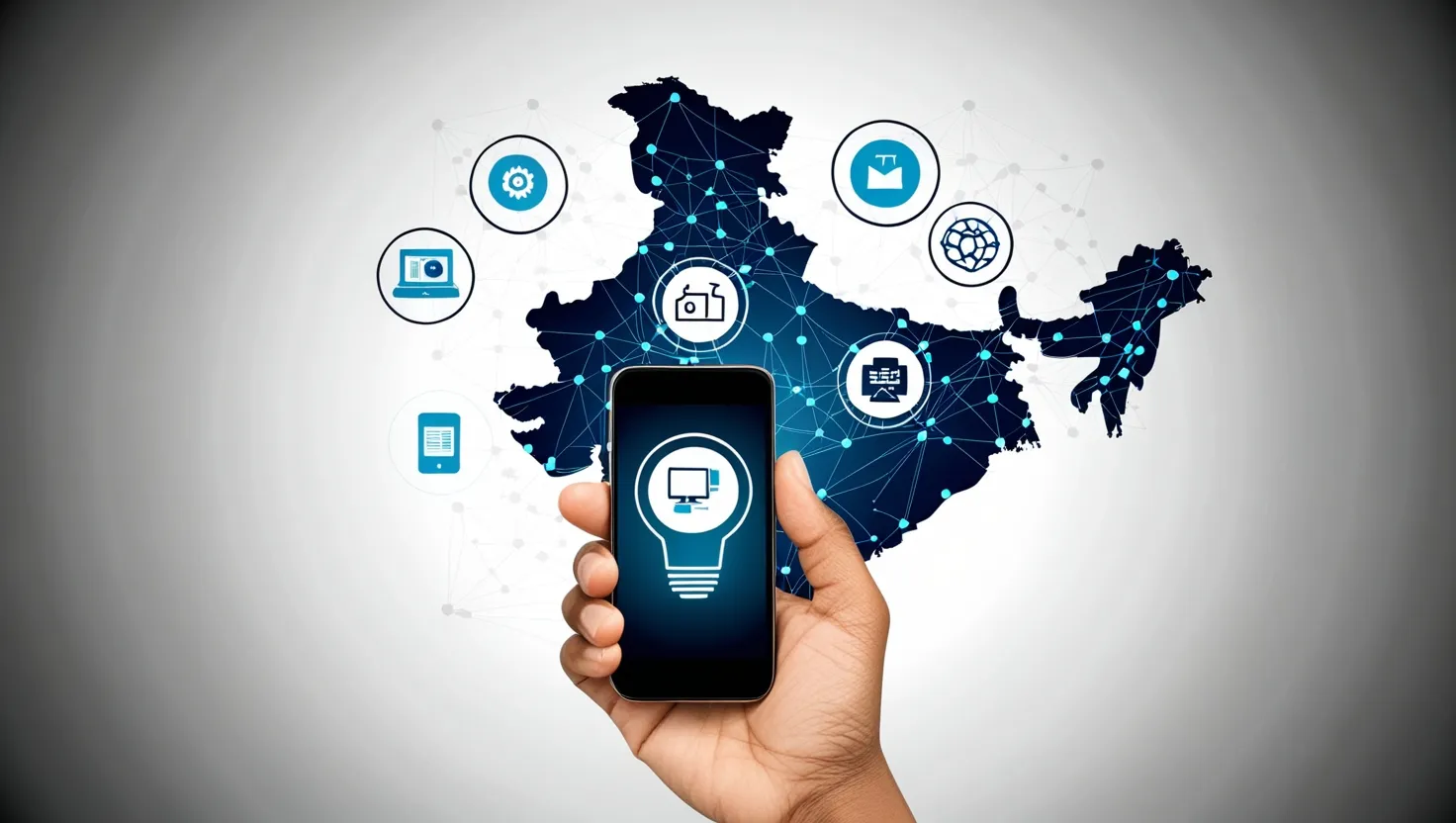As I reflect on the rapid evolution of India’s digital economy, it’s clear that a series of strategic reforms has been the driving force behind this transformation. These initiatives, each with its unique impact, are reshaping the way Indians live, work, and interact with technology.
At the heart of this digital revolution is the Digital India initiative, launched in 2015. This ambitious program has been a game-changer in integrating technology into the fabric of Indian society. It aims to create a digitally empowered society where every citizen has access to digital infrastructure as a utility, just like electricity or water. The initiative has significantly boosted e-governance, making government services more accessible and efficient.
One of the most tangible outcomes of Digital India is the e-Kranti program, which focuses on the electronic delivery of services. This has transformed how citizens interact with government agencies, from applying for passports to filing taxes. The National e-Governance Plan (NeGP) has been instrumental in building the necessary infrastructure, ensuring that even the most remote villages have reliable internet access. This has not only streamlined administrative processes but also reduced corruption and increased transparency.
Another revolution that has been quietly transforming India is the shift towards cashless transactions, spearheaded by the Unified Payments Interface (UPI). Launched in 2016, UPI has been a phenomenal success, recording over 83 billion transactions by the end of 2023. This platform has made digital payments incredibly easy, reducing the country’s dependence on cash and pushing India towards a cash-light future.
The ease of use and widespread adoption of UPI have been remarkable. With around 260 million users, it has become an integral part of daily life, from buying groceries to paying utility bills. The Reserve Bank of India and the National Payments Corporation of India have played crucial roles in stabilizing and innovating the UPI framework, ensuring its continued growth and reliability. As UPI expands globally, it’s poised to become a benchmark for digital payment systems around the world.
However, this digital advancement also brings with it the need for robust data protection laws. India has been working towards establishing comprehensive data protection regulations to safeguard citizens’ personal information. These laws are crucial in building trust in digital services and ensuring that businesses handle data responsibly.
The implications of these laws are far-reaching. They not only protect consumers but also create a more secure environment for businesses to operate in. Companies must now adhere to strict guidelines on data collection, storage, and usage, which can be a challenge but ultimately benefits the entire ecosystem. As India continues to refine its data protection framework, it’s likely to set a precedent for other countries in the region.
The rollout of 5G networks is another significant development that promises to propel India’s digital economy forward. The expansion of 4G has already improved internet speeds and connectivity across the country, but 5G is expected to take this to the next level. With its potential for faster speeds, lower latency, and greater connectivity, 5G will support advanced applications such as IoT, AI, and blockchain, driving innovation in various sectors.
Imagine a future where smart cities are the norm, with everything from traffic management to healthcare services optimized through 5G technology. This is not just a vision but a reality that India is rapidly approaching. The government’s proactive approach in rolling out 5G services in major cities, with plans for a wider rollout soon, underscores its commitment to staying at the forefront of technological advancements.
Alongside these technological advancements, the government has also recognized the importance of digital literacy and skill development. In a country with a vast and diverse population, ensuring that everyone has the necessary skills to participate in the digital economy is a daunting task. However, various initiatives have been launched to address this gap.
Programs aimed at enhancing digital literacy have been implemented across the country, targeting both urban and rural areas. These programs not only teach basic computer skills but also provide training in more advanced areas like coding, data analytics, and cybersecurity. By empowering citizens with these skills, the government is creating a workforce that is ready to take on the challenges and opportunities of the digital age.
This push for digital literacy is also creating new business opportunities. As more people gain the skills to participate in the digital economy, there is a growing demand for services and products that cater to this demographic. Startups and small businesses are thriving in this environment, offering everything from digital marketing services to e-commerce solutions.
However, despite these strides, there are challenges that need to be addressed. One of the primary concerns is the digital divide between urban and rural areas. While cities are rapidly adopting digital technologies, many rural areas still lack basic internet access. Bridging this gap is crucial for ensuring that the benefits of the digital economy are evenly distributed.
Another area for improvement is the infrastructure supporting these digital initiatives. While significant progress has been made, there is still a need for more robust and reliable digital infrastructure, especially in rural areas. This includes not just internet connectivity but also the physical infrastructure required to support advanced technologies like 5G.
In conclusion, India’s digital economy is on a trajectory of rapid growth, driven by a series of key reforms. From the Digital India initiative to the rollout of 5G, each of these reforms is transforming the way Indians live and work. As we move forward, it’s essential to address the challenges that come with this transformation, ensuring that the benefits of the digital economy are accessible to all.
The future looks promising, with India poised to become a major player in the global digital landscape. As we continue on this path, it’s clear that the digital economy will not just be a sector but an integral part of everyday life, driving innovation, creating opportunities, and improving the lives of citizens across the country.






